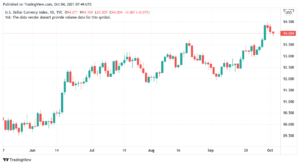
As we reported yesterday, Fivetran‘s deal to acquire HVR Software helped spur a new round of funding that has multiplied the firm’s valuation to over $5 billion. We had a chance to speak with CEO George Fraser to get a better idea of what the deal will mean for the company’s roadmap.
Fivetran’s claim to fame was being designed for the cloud. It is a cloud-based data transformation service that performs ELT (extract/load/transform) — that is, where the data transformation is performed inside the database. The going notion is that cloud storage and compute cycles are sufficiently inexpensive to move all data transformation in-database, thereby simplifying the architecture, reducing overhead, and taking advantage of the cloud’s sheer scale.
The core of Fivetran’s base has been the masses of customers introduced to data warehousing for the first time with services such as Amazon Redshift and Snowflake. These customers typically worked with Excel spreadsheets previously and lacked the IT resources to perform ETL with classic tools from the Informaticas or Talends of the world.
HVR on the other hand emerged as a challenger to high-performance, highly scaled, real-time enterprise change data capture such as Oracle GoldenGates or Striim. While it was more often than not typically used for migrating from enterprise databases like Oracle or SQL Server to cloud data warehousing targets, the software ran on-premises.
At first glance, it appears that Fivetran and HVR overlap in that both perform data replication. But HVR’s has been more industrial strength in performance and scale. And HVR has connectors to database targets like SAP HANA that have proven elusive for Fivetran.
By contrast, Fivetran’s own data replication mechanism was designed more for lower-scale data migrations, often working through APIs. Consequently, most Fivetran migrations have not been real-time, and in many cases, a staging tier has been necessary to aggregate data trickled or batched in from the various sources. But Fivetran also reaches to a wider variety of course compared to HVR; while HVR has focused largely on enterprise database migrations, Fivetran has connectors to a long tail of cloud applications where the data is only accessible via API, such as Salesforce, Facebook Ads Insights, TikTok ads, and so on.
The other major activity on Fivetran’s roadmap is expanding the library of connectors. As noted, while all the usual target databases are covered, Fivetran is also seeking to add online or mobile apps and services to the list. Currently, Fivetran has roughly 200 connectors, but they would like to grow it up by an order of magnitude. But it requires more streamlined processes for adding connectors to APIs. In a recent trial run, they were able onboard nearly a couple dozen sources over a few weeks, including Qualtrics’ Delighted net promoter scores.
Much of the attention being paid to Fivetran with the Series D financing and the HVR acquisition is driven by the expectation that this will enable Fivetran to expand from its niche with departmental and small-midsized enterprises workloads to the enterprise. On the face of it, this is a classic complementary acquisition: each brings a piece that the other lacks.
Speaking with Fraser, Fivetran’s goals are to eventually integrate HVR into the Fivetran cloud service, but as the solutions have significant technology differences, this won’t be an overnight process. For now, Fivetran has no plans to pull the plug on HVR’s on-premises business. Instead, we expect this could evolve where the on-premises HVR replication from on-premises plugs into the Fivetran data transformation in the cloud. Not surprisingly, with the ink still drying on the acquisition, there are no timetables yet for integration.
- acquisition
- Ads
- ADvantage
- All
- api
- APIs
- applications
- apps
- architecture
- Billion
- business
- cases
- ceo
- change
- Cloud
- cloud applications
- cloud storage
- company
- Compute
- Couple
- Customers
- data
- Database
- databases
- deal
- dozen
- driven
- Enterprise
- Excel
- Expand
- expanding
- Face
- Firm
- First
- first time
- Goals
- Grow
- HTTPS
- idea
- Including
- industrial
- integration
- IT
- Library
- List
- Long
- major
- Mobile
- move
- net
- Notion
- online
- oracle
- order
- Other
- performance
- real-time
- Resources
- Run
- sap
- Scale
- seeking
- Series
- Services
- So
- Software
- Solutions
- SQL
- storage
- Target
- Technology
- the world
- time
- Transformation
- trial
- Valuation
- Warehousing
- world
- ZDNET



